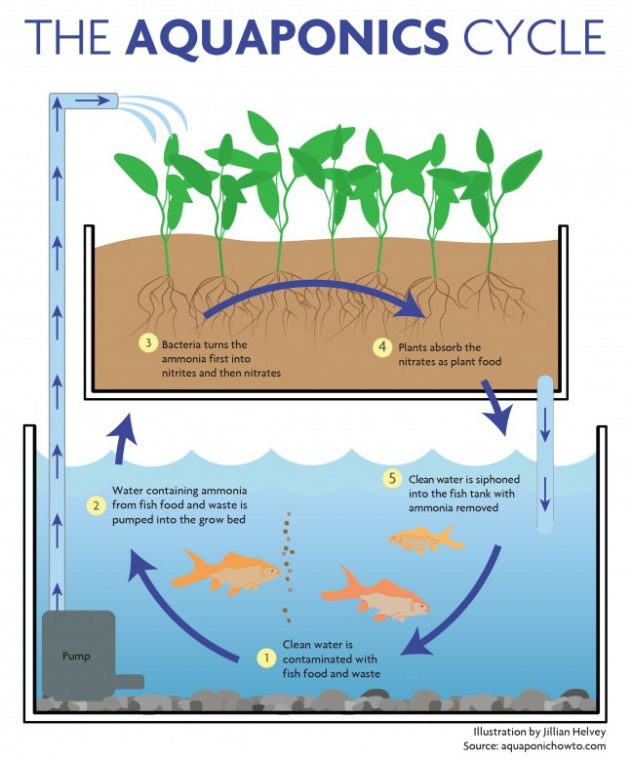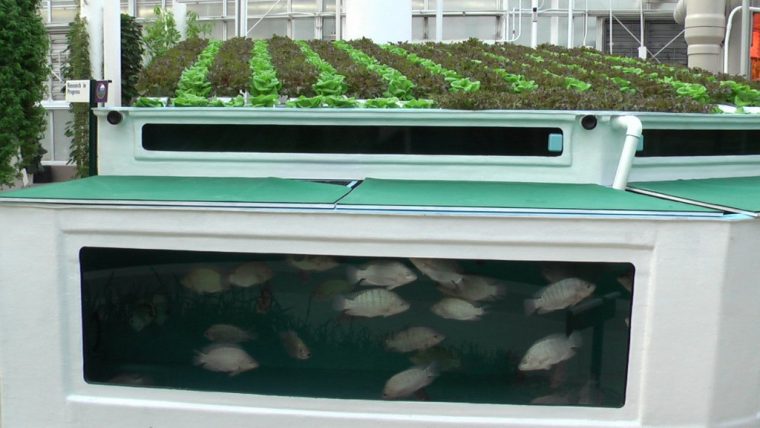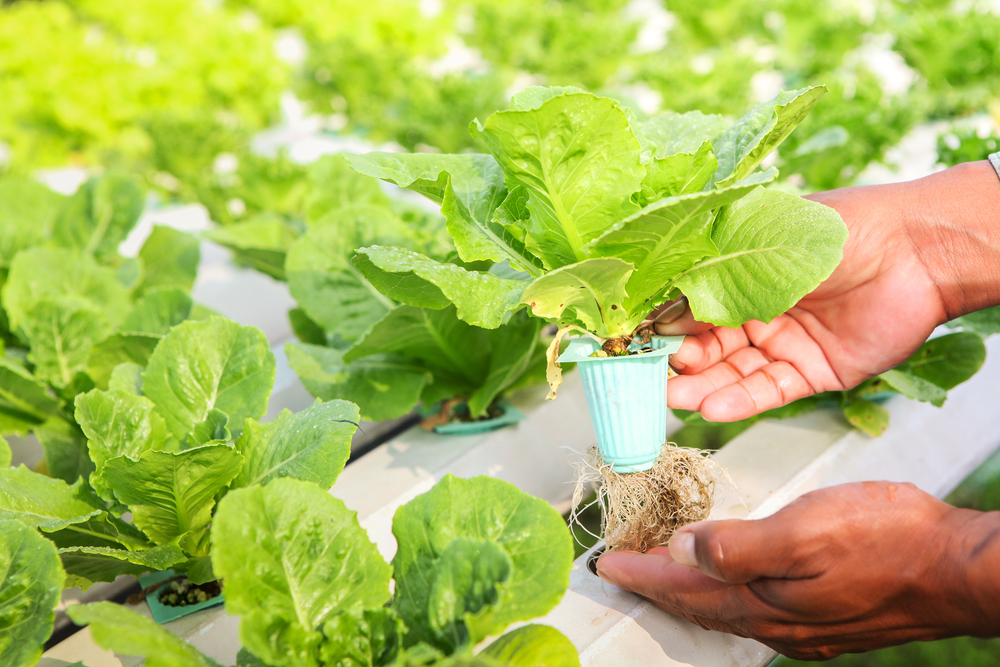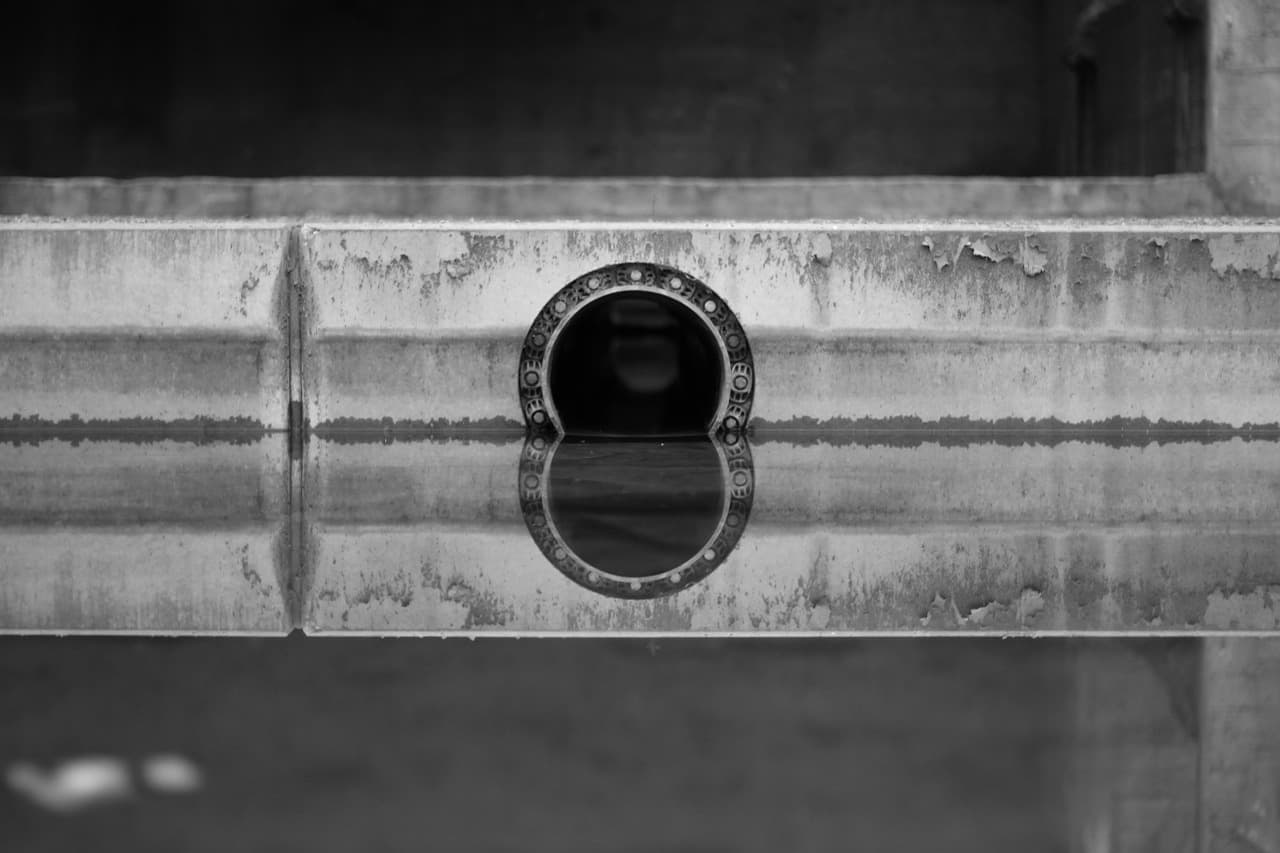The most simple definition one can find is that it is the marriage of aquaculture (raising fish) and hydroponics (the soil-less growing of plants) that grows fish and plants together in one integrated system.
No plant can live without water. Without water to dissolve nutrients in the soil, carry chemicals from the roots to the leaves and vice versa, and finally be turned into carbohydrates through photosynthesis, even the hardiest desert shrub would die.
Growing With Your Feet Wet
Out of the elements plant life requires – soil, water, sunlight and nutrients – soil is actually optional. Many types of plants live only in water, while most others can be grown hydroponically. In a hydroponic system, the roots are exposed to water, either constantly or periodically, and either anchored in some kind of inert solid medium or hanging free. The water contains all the nutrients the plants need and has a suitable pH balance. Whereas with soil, the roots need to spend time growing towards where the nutrients are, in a hydroponic system the nutrients come to them. Growing plants in soil means that you start with whatever acidity and nutrient content is already present, and can only do your best to improve it. With hydroponics, all of these factors are under your control from day one.
Instead of spending much of its energy developing a good root system, a plant grown hydroponically can divert this to developing fruit and flowers. Whereas vegetation in the ground has to fight off nematodes and fungi in order to stay healthy, a hydroponics system can remain totally free of disease if managed properly. For these reasons, hydroponic farming is becoming more popular both for commercial food production and hobbyist purposes.
Aquaponics
At some point, someone must have realized that a) there are plants that live in lakes, and b) fish are living there, too. If Mother Nature has organized things in this way, there might just be a good reason for it.
Plants thrive on the waste and decay of both plant and animal life, and fish produce waste as well. Much of this waste comes in the form of compounds rich in nitrogen, a primary nutrient for plants. The basic idea is therefore to feed fish, who will feed the plants, who in turn will consume nitrogen-rich ammonia and nitrates (along with various other chemicals) and thereby keep the water fresh for the fish. This is simply using the natural symbiotic cycle, balancing the plant and fish population to maintain water that’s healthy for both.
In fact, one version of this is used to purify industrial wastewater. Called phytofiltration, it often uses only the plant side of the process, although fish tolerant to toxins are also sometimes included.

The Elements of an Aquaponics System
Although aquaponics can work with a few fish simply living in the hydroponics tank, this is not the most efficient way of doing things. Separating the different processes allows for better control and results.
It’s crucial to understand that, just like in soil, healthful bacteria form an important part of the symbiotic cycle. Plants can’t usually access nutrients in their raw form (ammonia and nitrates) and rely on bacteria to process these into nitrites.
A typical aquaponic system might start with a rearing tank, which is simply an aquarium where the aquatic animal life lives. This is often fish or prawns grown for eating, but many types of fresh-water animals can be used.
From there, the water is pumped to a settling basin, which is just a holding tank allowing any solid gunk to drift either to the surface or the bottom. Next comes the biofilter where most of the bacteria live. Here, the conversion of what the fish excrete to what the plants can use takes place. The water exiting from here can be pumped directly to the hydroponics farm, which may be of any type.
Finally, a reservoir called the sump is usually included, where expended water can remain before being filtered and reused.

Experimenting with Aquaponics
A medium-sized aquaponics system need not have every element listed above as a separate unit, but can combine them. Potentially, a medium-sized system can provide a respectable amount of both protein and vegetables quite fit for human consumption, with only limited skill, monitoring and maintenance required. A very simple system can be implemented in a decorative aquarium, which will help you learn the basics while providing a wonderful educational opportunity for your kids.









